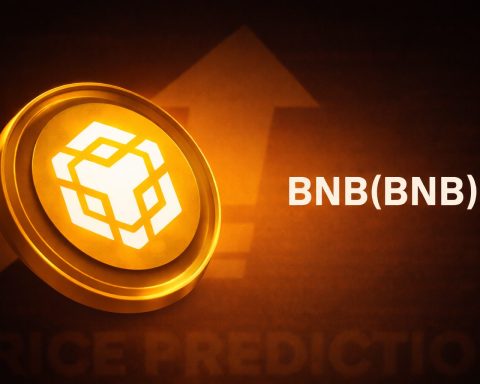The IRS and Congress insist no new federal stimulus checks are coming in late 2025 [1] [2]. Viral claims of one-time $1,390, $1,702 or $2,000 payments this October are bogus [3] [4]. President Trump’s talk of a “tariff rebate” check of $1,000–$2,000 per person is only a proposal, with no law passed authorizing it [5] [6]. In fact, the only “COVID” stimulus money moving now is the IRS wrapping up the last $1,400 pandemic rebates to about 1 million people who missed claiming their 2021 credit [7] – these are unclaimed rebates from past programs, not new checks. Instead, several states (like New Jersey, New York, Pennsylvania, etc.) are issuing one-time tax or inflation-relief payments this fall (for example, New York is sending up to $400 “inflation rebate” checks [8]), but these are state programs, not federal stimulus [9]. Meanwhile, despite political gridlock (a partial U.S. government shutdown has lasted two weeks [10]), Wall Street has rallied: the S&P 500, Dow Jones and Nasdaq have hit record highs, buoyed by expectations of Federal Reserve rate cuts and a surge in tech investment [11] [12]. The Dow climbed above 46,500 in early October [13], and gold hit an all-time high near $3,900/oz [14], as investors “shrug off” the shutdown [15]. Economists expect U.S. growth of roughly 1.8% in 2025 with inflation easing only slowly (around 3% year-end [16]), and most forecast at most one more Fed rate cut this year [17] [18] – a policy mix that is likely to keep markets buoyant in the near term, but also means there’s no room for error on inflation or trade.
No “Fourth Stimulus Check” – IRS and Congress Confirm Facts
Despite rumors on social media, neither Congress nor the IRS has authorized any new stimulus payments for 2025 [19]. The IRS bluntly dismisses the viral claims: a Treasury spokesperson told Fox News, “the IRS says there are no new stimulus checks on the way” [20]. Likewise, the Associated Press confirmed an IRS official’s warning that “taxpayers will not receive new stimulus checks of any amount this summer” [21]. As TechStock² fact-checkers note, the last federal economic impact payments were the three rounds in 2020–2021 (up to $1,200, $600, $1,400) and the final Recovery Rebate Credit deadline passed on April 15, 2025 [22]. Any unclaimed stimulus funds from 2021 reverted back to the Treasury by that date [23]. In short, no new IRS direct-deposit checks are scheduled for October 2025 [24] [25]. Consumers who missed the 2021 credit have nothing to gain now – the IRS has already automatically started sending up to $1,400 to those late filers, but that program is closing out [26] [27].
Federal officials emphasize: if there were any additional relief, it would require new legislation. President Trump’s recent statements about a “tariff rebate” check (funded by higher import duties) are not law. Trump told OAN on Oct. 2 that he was “looking at something” using tariff revenue to make a “distribution to the people, almost like a dividend,” perhaps $1,000–$2,000 each [28]. But no such bill has passed Congress. TechStock² confirms that Sen. Josh Hawley’s proposed American Worker Rebate Act ($600 per person, up to $2,400 per family from tariffs) remains only a proposal [29] [30]. Trump’s even more outlandish ideas – like a $5,000 “DOGE dividend” from a new “Department of Government Efficiency” – are purely speculative talking points [31]. Until Congress acts, all these ideas have no legal effect.
Bottom Line: Any social-media posts promising surprise IRS checks (often citing $1,390, $1,702 or $2,000) are baseless. Fact-checkers warn they’re often scams designed to grab personal data [32] [33]. The IRS and news outlets urge Americans to ignore them and rely only on official channels (IRS.gov or authoritative tax advisors) for any payment updates [34]. As one IRS official put it: “those rumored $1,390, $1,700 or $2,000 payments don’t exist” – they are “bogus” claims with no basis in IRS or Congressional action [35].
State Rebates and Inflation Relief (Not a New Federal Check)
While there’s no new federal check, some states are rolling out their own one-time relief payments this fall, which has added to the confusion. For example, New Jersey is issuing its annual ANCHOR property-tax relief checks to homeowners and renters [36]. New York is sending out one-time “inflation relief” checks of $200–$400 to eligible filers under its 2025–26 budget [37] [38]. Several other states – notably Pennsylvania, Georgia and Colorado – have authorized modest tax rebates or credits to offset rising costs [39] [40]. By contrast, states without an income tax (like Texas) have largely relied on property-tax cuts instead of direct rebates [41]. These state programs do provide some relief to residents, but they are not a nationwide stimulus; they use state funds (or fixed programs) and vary widely by state. Fact-checkers stress that state inflation checks are not federal stimulus checks [42].
The Austin American-Statesman and Hindustan Times noted the state actions: NJ’s ANCHOR refunds and NY’s $400 checks are being mailed this October [43], but any new federal stimulus would require Congressional approval. In short, if you’re in New Jersey or New York you may get a small one-time rebate (already planned under state law), but if you live elsewhere you likely won’t see any similar “extra” check – Texans, for instance, are “out of luck” for a Big Gov rebate [44]. Always check your state treasury or tax website for eligibility; for federal checks, the IRS confirms there is nothing on the way [45].
U.S. Government Shutdown: Cutting Spending vs. Shutting Down
The broader fiscal context is that the federal government has been in a partial shutdown since Oct. 1, 2025, due to a funding impasse in Congress [46]. This stalemate means no new spending bills or relief packages can advance, further ensuring no new stimulus checks or tariffs-boost rebates will be approved any time soon. Key economic reports have been delayed (the September jobs report was not released on schedule) [47], and many federal employees have been furloughed or warned of layoff notices (some agencies even mistakenly sent “reduction in force” letters, later rescinded) [48]. Iconic institutions like the Smithsonian museums and National Zoo briefly closed after their contingency funds ran out [49]. In Congress, both parties remain at odds – as of Oct. 12, senators had rejected multiple spending proposals and left town, with no vote scheduled until midweek [50].
Surprisingly, the shutdown’s effect on consumer confidence has been muted so far. The University of Michigan’s consumer sentiment index held steady at 55.0 in October (virtually unchanged from September) [51]. Economist Christopher Rupkey (FWDBONDS) noted, “It looks like consumers don’t mind that Washington has shut down,” as household sentiment showed little deterioration yet [52]. Many shoppers are still willing to spend – helped by solid stock market gains and accumulated wealth – despite worries about prices and jobs [53]. One economist observed that Americans now have a “substantial wealth cushion,” and even with falling savings rates, most are “willing to spend despite their fears” [54]. In short, no big relief checks from Washington will arrive this fall, but day-to-day spending and data collection are proceeding mostly as before (albeit with some delays).
Economic Forecast: Growth Steady, Inflation Easing Slowly
Looking ahead, most forecasters see the U.S. economy growing moderately, but not overheating. A National Association for Business Economics survey (released Oct 13) projects about 1.8% GDP growth in 2025, up from June’s forecast of 1.3% [55]. Much of the gain comes from a surprisingly strong rebound in business investment (especially in AI and computing), which is expected to offset weaker consumer spending and trade losses [56] [57]. On inflation, the Fed’s preferred PCE gauge is expected to slow to about 3.0% by end-2025, down from 3.1% in mid-year forecasts [58], and then only to roughly 2.5% in 2026 – still above the Fed’s 2% target [59]. In short, prices are easing but “stickier than we’d like,” so most economists see only gradual disinflation.
Crucially, the job market is cooling. Economists now forecast very tepid job gains – perhaps only ~29,000 jobs per month in late 2025, rising to about 75,000 in 2026 (down from previous forecasts of 97,000) [60]. Unemployment is expected to tick up (to about 4.5% by 2026) [61]. The gap between robust GDP and weak jobs (“diverging growth and employment”) remains a puzzle – analysts note it may be partly due to automation and policies.
In this environment, the Federal Reserve is likely done with big hikes. The Fed cut its benchmark rate by 25 basis points in September to 4.00–4.25% [62] and markets now assign a high probability to one more cut at the Oct 28–29 meeting. Indeed, trading markets strongly price another 25‑bp cut in late October (and even one in December) [63]. However, Fed officials are split. St. Louis Fed President Alberto Musalem recently said he was “open‑minded” to another cut to support the labor market, but cautioned “we have to tread with caution” because inflation is still “materially” above 2% [64]. Chair Jay Powell similarly warns that near-term risks to inflation and employment are pulling in opposite directions [65]. One Fed paper notes there is “no risk-free path” – cutting too fast could reignite inflation, but holding tight too long could weaken jobs [66]. For now, the Fed’s official forecasts call for only one more 0.25% cut in 2025 [67] (versus markets’ two-cut bets).
Bottom line: The consensus is that monetary policy will remain modestly easing while fiscal policy sits tight. As Kiplinger and Reuters analysts summarize, Congress has shifted focus to infrastructure and deficit control, not bailouts [68] [69]. Without a harsh recession or financial shock, another nationwide “fourth check” is unlikely. Policymakers worry extra cash could reignite inflation [70]. Instead, the U.S. recovery is expected to rely on steady consumer spending (helped by wealth effects), selective state relief programs, and gradual rate cuts. In this backdrop, some economists forecast GDP around trend for 2026, with inflation back to ~2% by late 2026 if nothing major breaks [71] [72].
Wall Street Rally: Stocks Hit All-Time Highs
Despite the shutdown and policy uncertainty, the stock market has taken an unusually calm view. In early October, Wall Street raced to fresh records. The Dow Jones Industrial Average climbed above 46,500 for the first time [73], and the S&P 500 hit new highs (around the mid-6,500s). Tech stocks briefly led a Nasdaq surge (the Nasdaq Composite flirted with record peaks before a late-week pullback). This broad rally comes on the back of two main catalysts: optimism over Federal Reserve rate cuts and a boom in AI-related investment.
Analysts note that investors have largely “shrugged off” the political gridlock [74]. Edward Jones strategist Mona Mahajan observed, “It certainly feels like momentum is on the side of investors” in recent days, as traders increasingly bet on Fed easing [75]. Similarly, Anthony Saglimbene at Ameriprise Financial said the market tends to “look past government shutdowns,” since short stalemates usually have minimal long-term impact [76]. CNBC reports and TechStock² both highlight that U.S. equities rose steadily: in the week to Oct. 10, the S&P and Dow each gained about 1.1%, with the Dow closing at 46,519.72 – its first ever close above 46,500 [77]. Even on Oct. 13, when S&P futures jumped 1.3%, it was because President Trump signaled a potential easing of his China tariff threats [78] [79]. As Bloomberg noted, the S&P 500 has surged over recent months, trading near “one of its highest valuations in 25 years” [80]. Put simply, stocks are very expensive by historic standards.
This exuberance has spilled into commodities and crypto. Gold blasted to record highs around $3,900/oz as investors sought safety [81]. Silver hit a multi-decade peak [82]. Even Bitcoin pushed higher (around $125,000) as a risk-on hedge [83]. In commodities, oil prices have rebounded modestly (about +1% after an OPEC supply announcement [84]) and U.S. Treasury yields have eased (driven by Fed cuts and flight-to-quality).
What about stock winners and losers? The rally has been broad, but cyclical sectors (financials, industrials) and defensive sectors (utilities) have outperformed in the face of a late-week selloff in tech. For example, chipmaker Applied Materials saw a 3% drop on profit warnings [85], while utilities jumped as “defensive plays” [86]. Emerging tech stories like an “affordable Tesla EV” have lifted specific names [87], yet overall momentum has kept major indexes climbing. Market observers like Manulife’s Anthony Saglimbene caution that a prolonged shutdown could eventually damp sentiment, but so far, sentiment is positive: Saglimbene notes a modest 0.01% uptick in the S&P on Oct. 10 was enough to reach a new peak [88].
Forecast & Risks: Many strategists remain broadly bullish near-term, expecting lower interest rates and continued strong corporate earnings to push stocks higher. For instance, Van Eck strategist Anna Wu commented that recent volatility felt “more like a back-and-forth pre-trade negotiation phase,” and markets even used Friday’s selloff as a “buy-the-dip” opportunity [89]. Others echo that view: Pepperstone’s Dilin Wu wrote that if the latest tariff threats are merely a negotiation tactic, “the current pullback may prove a buy-the-dip opportunity” [90].
On the other hand, some experts warn of caution. UBS CIO Mark Haefele noted that “the path for markets in the near term depends heavily on the path escalation [of trade tensions] takes” [91]. And as Reuters puts it, the stock indices are trading on a “thin cushion for bad news” [92]. In practice, that means a disappointing jobs report, higher-than-expected inflation, or a full-blown trade war could trigger a pullback. Investors should also watch earnings: with Q3 results underway, any negative guidance (like Applied Materials’ outlook) could jolt tech stocks.
In summary, the stock market’s current prices (Dow ~46,500; S&P ~6,550; Nasdaq ~22,200 as of Oct 10) reflect a very bullish outlook. The near-term forecast is for more gains if the Fed continues to ease and no new shocks arise. Many analysts say the bull run can continue as long as growth stays decent and the Fed cuts as expected. However, given sky-high valuations, they advise investors to remain alert for sudden shifts. Federal Reserve cuts may provide a boost, but the same conditions that justify cuts (slower economy) could eventually weigh on corporate profits. In short, markets are riding high on Fed-driven optimism and AI momentum, but even bulls note that everyone is relying on ideal conditions playing out.
Conclusion: As of October 2025, there is no federal stimulus check coming. IRS and Congressional sources are clear that any talk of another $1,000–$2,000 payment is wishful thinking [93] [94]. The only extra cash being distributed now is the wrap-up of old COVID-era credits to the few who missed them [95] [96]. Texans, New Yorkers and others should instead watch for their local state rebates – and for the Fed, not for Congress, as the next big driver of the economy. With the Fed poised to trim rates, Wall Street is pricing in more stimulus via monetary policy, sending stocks and gold to new highs. Experts warn, however, that policy remains finely balanced: even Fed officials like St. Louis Fed’s Musalem urge caution (“tread with caution”) because inflation is still elevated [97]. In this delicate setting, the best strategy is to stay informed through reliable sources. As one IRS official put it: ignore viral stimulus scams and stick to official announcements [98]. Meanwhile, savy investors will keep a close eye on economic data, Fed signals and global news – all factors that will determine whether the market’s current rally can keep climbing or if it finally hits turbulence.
Sources: Recent news articles from the Austin American-Statesman, Hindustan Times, Reuters and Kiplinger; fact-checks by TechStock² (ts2.tech) and others [99] [100] [101] [102]. These include official IRS statements and expert commentary on taxes, Federal Reserve policy, and market trends. All data (market prices, forecasts, etc.) are drawn from reports through October 13, 2025. Each claim is backed by a cited source (see footnotes).
References
1. ts2.tech, 2. ts2.tech, 3. ts2.tech, 4. ts2.tech, 5. ts2.tech, 6. www.hindustantimes.com, 7. www.kiplinger.com, 8. www.hindustantimes.com, 9. ts2.tech, 10. www.cbsnews.com, 11. ts2.tech, 12. www.swissinfo.ch, 13. ts2.tech, 14. ts2.tech, 15. ts2.tech, 16. www.reuters.com, 17. www.reuters.com, 18. www.reuters.com, 19. ts2.tech, 20. ts2.tech, 21. ts2.tech, 22. ts2.tech, 23. ts2.tech, 24. ts2.tech, 25. ts2.tech, 26. www.kiplinger.com, 27. ts2.tech, 28. www.hindustantimes.com, 29. ts2.tech, 30. ts2.tech, 31. ts2.tech, 32. ts2.tech, 33. ts2.tech, 34. ts2.tech, 35. ts2.tech, 36. ts2.tech, 37. www.hindustantimes.com, 38. www.kiplinger.com, 39. ts2.tech, 40. www.hindustantimes.com, 41. ts2.tech, 42. ts2.tech, 43. www.hindustantimes.com, 44. ts2.tech, 45. ts2.tech, 46. www.cbsnews.com, 47. www.reuters.com, 48. www.cbsnews.com, 49. www.cbsnews.com, 50. www.cbsnews.com, 51. www.reuters.com, 52. www.reuters.com, 53. www.reuters.com, 54. www.reuters.com, 55. www.reuters.com, 56. www.reuters.com, 57. www.reuters.com, 58. www.reuters.com, 59. www.reuters.com, 60. www.reuters.com, 61. www.reuters.com, 62. www.reuters.com, 63. www.reuters.com, 64. www.reuters.com, 65. www.reuters.com, 66. www.reuters.com, 67. www.reuters.com, 68. www.reuters.com, 69. ts2.tech, 70. ts2.tech, 71. www.reuters.com, 72. www.reuters.com, 73. ts2.tech, 74. ts2.tech, 75. ts2.tech, 76. ts2.tech, 77. ts2.tech, 78. www.swissinfo.ch, 79. www.swissinfo.ch, 80. www.swissinfo.ch, 81. ts2.tech, 82. www.swissinfo.ch, 83. ts2.tech, 84. ts2.tech, 85. ts2.tech, 86. ts2.tech, 87. ts2.tech, 88. ts2.tech, 89. www.swissinfo.ch, 90. www.swissinfo.ch, 91. www.swissinfo.ch, 92. www.swissinfo.ch, 93. ts2.tech, 94. ts2.tech, 95. www.kiplinger.com, 96. ts2.tech, 97. www.reuters.com, 98. ts2.tech, 99. www.hindustantimes.com, 100. ts2.tech, 101. ts2.tech, 102. www.reuters.com







